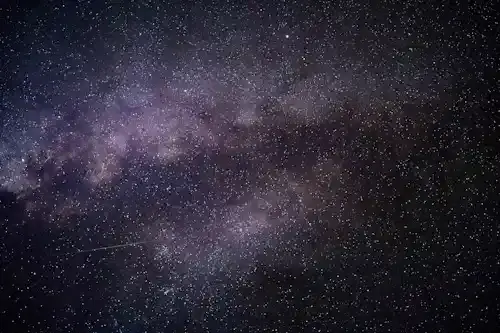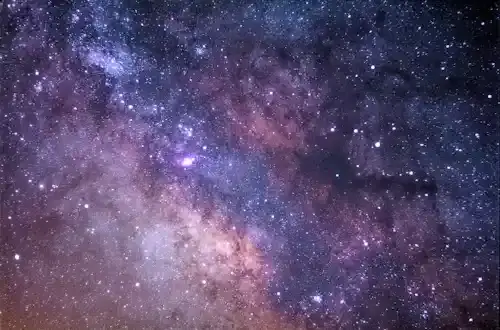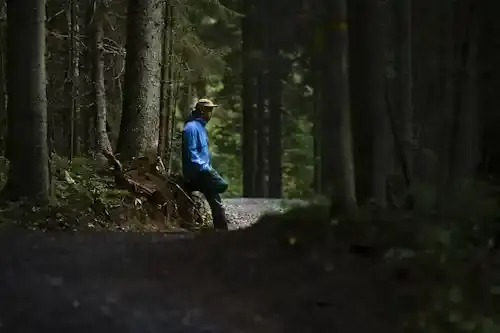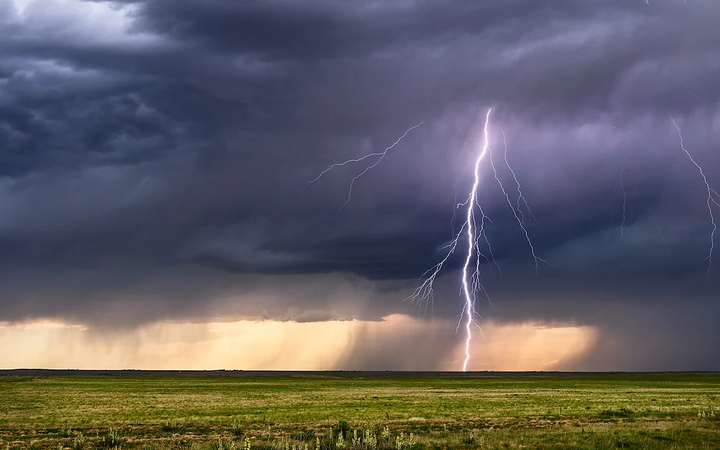Our cosmic neighborhood may be ten times larger than we thought.
In the late thirties, astronomer Harlow Chabli stared at the sky and noticed something unusual - a huge cloud of galaxies in the constellation Centaurus. This was a strange cloud at the time, a shimmering patch of matter that stretches deep into space. Today, we know that this is not an ordinary group but one of the largest structures known in the universe: the Shapley concentration. Recent work by astronomers at the University of Hawaii suggests that our Milky Way galaxy may not be where we thought it existed. Our galaxy, along with tens of thousands of other galaxies, may belong to a vast cosmic network associated with the Chablis focus, a region so massive that it cannot be understood. R. said. Brent Talley, lead author of the study, said: "Our universe is like a giant network, where galaxies lie along filaments and come together at a node where gravitational forces pull them together. "As water flows within a catchment, galaxies flow within cosmic gravitational basins. "The discovery of these larger basins could fundamentally change our understanding of cosmic structure." Tally and his team, working under the CosmicFlows project, have spent years studying the motions of 56,000 galaxies, and their latest findings suggest that our cosmic neighborhood may be ten times larger than previously thought.
Recommend
Show key points
- The Shapley concentration, first noticed in the 1930s, is now known to be one of the largest cosmic structures in the universe.
- New research suggests that the Milky Way may be part of a much larger region known as the Chablis focus, potentially ten times larger than the Laniakea supercluster.
- Galaxies move through space influenced by massive gravitational basins, similar to how water flows through catchments.
- ADVERTISEMENT
- Talley and his team used redshift surveys of 56,000 galaxies to trace these gravitational flows and reveal the vast cosmic network.
- These findings challenge the current standard model of cosmology, which predicts a limit on the size of cosmic structures.
- The universe appears to be a web of dark matter and gas filaments, with galaxies clustering at nodes due to gravity.
- Despite advanced instruments, astronomers believe that we have only scratched the surface in understanding the universe’s true scale.
Zoom in to see a massive cosmic network

The largest structures of the universe have always puzzled minds. Galaxies are not randomly scattered across space. Rather, it forms a cosmic network – tiny filaments of gas and dark matter that stretch for billions of light-years. This network is so enormous that it began to focus only in the eighties when astronomers first developed instruments capable of observing these vast distances. At the center of this network are superclusters of galaxies, regions where galaxies clump together and their gravity attracts more matter. For years, we thought our galaxy lived within the Laniacia supercluster, a sprawling region spanning 500 million light-years. But Tally's new research suggests that Lanyakia may be just part of a much larger structure – Chablis's focus. Chablis's focus is an enormous basin of gravity. Galaxies do not sit still in space. As with the rivers that flow through the valleys, galaxies drift along the paths defined by these massive structures. This influx may carry us far beyond Lanyakea, into an even greater gravity basin. Ehsan Korkeci, one of the study's authors, says: "We still stare through giant eyes, but even those eyes may not be big enough to capture the full picture of our universe.
Expanding our Hungarian vision

If Chablis's focus is indeed attracting the Milky Way, it means that our galaxy is part of a structure that may be up to 10 times larger than Laniakea. To put that in perspective, Lanyakia already spans 500 million light-years and contains more than 100,000 galaxies – making this new structure almost incomprehensible. The discovery is based on the study of the motion of galaxies. By mapping the speeds of galaxies, Talley's team was able to observe how gravity pulls the galaxy through space. The trapped galaxy is pulled between two massive structures in multiple directions, with its motion revealing the forces of gravity exerting. This technique, known as redshift surveying, helped astronomers map the vast structure of the universe. And what they've found so far is fantastic. The Milky Way, along with its neighboring galaxies, appears to be moving toward Chablis's focus. But this discovery also challenges our current models of the universe. For decades, astronomers have relied on the standard model of cosmology, which describes the expansion of the universe, dark matter, and dark energy. These forces have shaped the universe for billions of years, creating the massive structures we see today. However, Chablis's focus and other similar monumental structures push the boundaries of what our models can explain. According to the standard model, structures larger than about 1.2 billion light-years should not exist. But Chablis's focus—and another recent discovery known as the Great Wall of Sloan—seems to challenge this rule. These structures span billions of light-years, far beyond what cosmologists predicted.
Looking beyond the Milky Way
Talley's team thinks we're still discovering the surface. Their work suggests that cosmic surveys may not be large enough to map the true size of the largest structures in the universe. "This discovery is challenging: our cosmic surveys may not be large enough to map the full extent of these massive basins," Korkshi said. "We're still staring through giant eyes, but even those eyes may not be big enough to capture the full picture of our universe." This ancient structure, born in the early days of the universe, was formed from small fluctuations in density. Over billions of years, these fluctuations grew under the force of gravity, slowly pulling matter into the vast cosmic network we see today. While we can't see all the components of this network — like dark matter that makes up most of its mass — scientists have found clever ways to track its existence. By observing how galaxies move through space, they can map the hidden forces that make up the universe. The search for answers continues. As Talley's team refines their surveys, they may discover larger structures.
![]()
The ten most lonely things in the world
The loneliest whale in the world sings at a frequency no other whale can hear. The only tree in a 400 km stretch of desert was hit by a drunk driver. A little robot named Curiosity sings “Happy Birthday” to itself every year on Mars. more- ADVERTISEMENT
![]()
Immersion in Guinea-Bissau culture: music, dance and festivals
Dive into Guinea-Bissau’s lively culture through its traditional music, storytelling dance, and vibrant festivals like Tabanka and the Bissau Carnival. Join the locals, feel the rhythm, and celebrate a heritage rich in African, Portuguese, and indigenous spirit—every moment is a joyful celebration of life and connection. more- ADVERTISEMENT
![]()
At each moment, there are about 2,000 thunderstorms occurring on Earth.
Thunderstorms are powerful and common, with up to 2,000 happening worldwide at any time. Florida sees the most in the U.S., while Venezuela’s Lake Maracaibo holds the record for lightning. Remember: if you hear thunder, go inside—lightning can be deadly, even from miles away. more- ADVERTISEMENT
![]()
Mental flexibility - what is it? And how to get there?
Mental flexibility - what is it? And how to get there? more- ADVERTISEMENT
![]()
The Hundred Years War: A Comprehensive Overview
The Hundred Years' War reshaped England and France through fierce battles, bold claims to thrones, and shifting power. From iconic victories like Agincourt to Joan of Arc’s rise, this long conflict helped forge national identities and modern warfare, leaving a lasting mark on European history. more- ADVERTISEMENT
![]()
The best ChatGPT alternatives, including what is free
ChatGPT is an advanced language AI revolutionizing communication and creativity with human-like conversations and text generation. Alongside it, impressive free alternatives like Google's Bard, Jasper Chat, Bing AI, and Perplexity AI offer unique features—from creative writing to fact-based search—making AI tools more accessible, powerful, and tailored to user needs. more- ADVERTISEMENT
![]()
Human population growth: where are we now?
As the global population heads toward 10.5 billion by 2100, challenges like aging populations, food security, and environmental strain grow. While prosperity helps lower fertility, it also increases environmental harm. Addressing climate change, boosting food production sustainably, and shifting to low-carbon energy are key to balancing growth and the planet’s health. more- ADVERTISEMENT
![]()
A book that may interest you - Influence: The Psychology of Persuasion
A book that might interest you - Influence_ The Psychology of Persuasion more- ADVERTISEMENT
![]()
Time Management Skills: Effective Methods to Increase Productivity
Time isn’t just ticking—it’s the most valuable thing we have. Managing it right means less stress, more focus, and better balance between work and life. With simple techniques like prioritizing tasks or using the Pomodoro method, we can work smarter, not harder, and truly make every moment count. more- ADVERTISEMENT
![]()
How to identify and transform a bad manager: lessons learned and the path to success
Bad managers hurt morale, kill productivity, and damage a company’s success. They micromanage, lack empathy, and avoid conflict, leading to high turnover and chaos. But the journey to becoming a good manager starts with self-awareness, better communication, and trust—turning toxic workspaces into thriving ones. more- ADVERTISEMENT





















